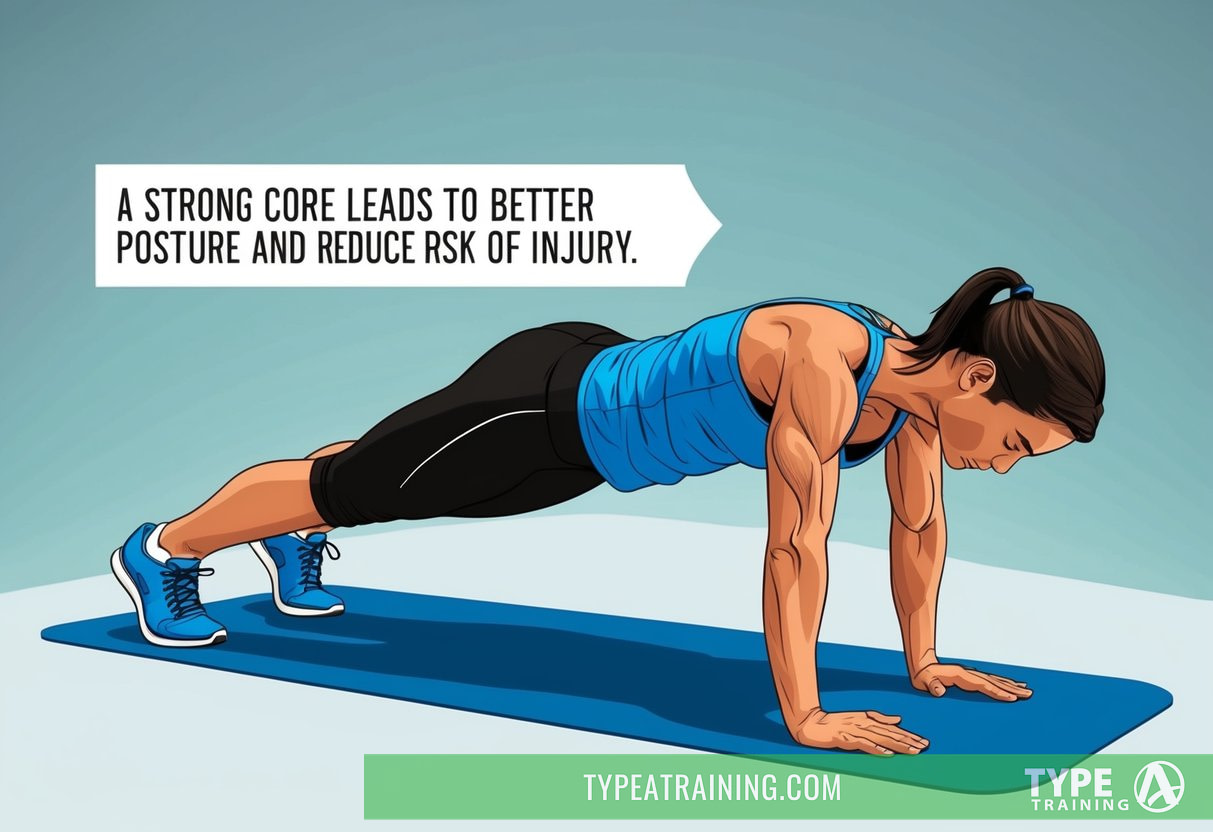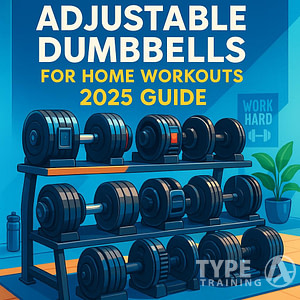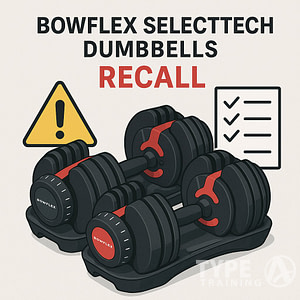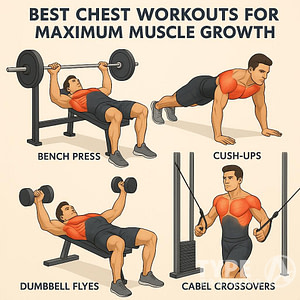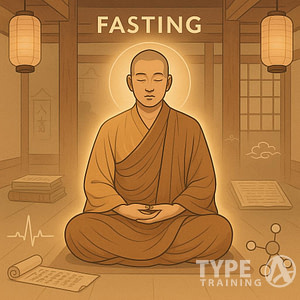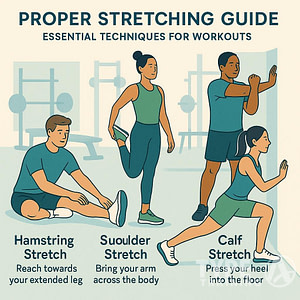Strengthening your core is essential for overall fitness and stability. Incorporating plank variations into your workout routine is an effective way to achieve this.
By diversifying your planking exercises, you can target different muscle groups and challenge your body in new ways.
Why stick to the same routine when you can maximize your results with a few simple changes? Whether you’re looking to increase your strength, improve stability, or just add some variety to your workouts, trying different plank variations can make a significant difference.
1) Plank with Shoulder Taps
Popular posts:
Plank with shoulder taps is an effective exercise for boosting core stability and strength. This variation targets your abdominals, obliques, and shoulder muscles.
To start, get into a standard plank position with your hands placed directly under your shoulders. Ensure your body forms a straight line from your head to your heels.
Engage your core to keep your hips stable. Then, lift your right hand off the ground and tap your left shoulder. Return your hand to the starting position and repeat with the other hand.
Performing this movement without letting your hips sway engages your stabilizing muscles. This enhances your balance and coordination.
Adding plank shoulder taps to your workout can be particularly beneficial for improving upper body strength. It can increase your shoulder mobility and improve your overall posture.
For more details on plank shoulder taps, visit the beginner’s guide to building core strength.
2) Side Plank with Leg Lift
The Side Plank with Leg Lift is a challenging modification that enhances your core and hip strength.
To do this, lie on your side with your legs extended. Prop yourself up on your forearm, ensuring your elbow is directly below your shoulder. Your body should form a straight line from head to heels.
Once in position, engage your core and lift your top leg as high as you can while maintaining form. Hold the position for a few seconds before slowly lowering your leg back to the starting position. Repeat the movement for the desired number of repetitions, then switch to the other side.
This exercise targets the obliques, glutes, and hip abductors, making it a comprehensive core workout. It also improves balance and stability. Make sure to keep your hips elevated and your core tight throughout the exercise to maximize its benefits.
For additional guidance on performing this exercise, you can refer to Tom’s Guide on Side Plank with Leg Raises. This resource provides detailed instructions and tips.
3) Reverse Plank
The reverse plank targets the muscles along the backside of your body. When performed correctly, it also engages your abdominals.
To begin, sit on the floor with your legs extended in front of you. Place your hands behind you with fingers pointing forward. Press into your palms and lift your hips.
Focus on creating a straight line from your shoulders to your heels. Ensure your neck remains neutral and avoid letting your hips sag. Hold this position.
Engage your glutes, hamstrings, lower back, and core to maintain stability. Start by holding for 15-30 seconds and gradually increase the duration as you build strength.
This plank variation is particularly effective in yoga workouts, but it’s a great addition to any routine.
For more tips on the reverse plank, refer to Verywell Fit’s guide. Understanding the proper technique will maximize the benefits and minimize the risk of injury. Try incorporating the reverse plank for a holistic core workout.
4) Plank Jacks
Plank jacks add a cardio element to the traditional plank, making it dynamic and more challenging.
To begin, get into a high plank position, ensuring your body forms a straight line from your head to your heels.
Engage your core and jump your feet out to the sides, similar to a jumping jack motion. Then jump your feet back together.
Keep your movements controlled to maintain the integrity of the plank position. This exercise targets your core while elevating your heart rate for added cardiovascular benefits.
For beginners, start with smaller, slower jumps to maintain form. As you progress, increase the speed and width of your jumps. Aim for 15-20 repetitions or as many as you can perform with good form.
Performing plank jacks regularly can help improve your coordination, agility, and core stability. Make sure to keep your shoulders directly over your wrists and avoid letting your hips sag.
If you’re looking for more variety in your plank exercises, incorporating plank jacks can be an effective way to enhance your workout. Enjoy the dual benefits of core strengthening and cardio in one move.
5) Plank to Push-Up
The Plank to Push-Up is a dynamic exercise that effectively targets your core, shoulders, and triceps.
To perform this exercise, start in a high plank position with your hands directly under your shoulders and your body forming a straight line from head to heels.
Lower your right forearm to the ground, followed by your left forearm, transitioning into a low plank.
Push through your right hand to raise back into a high plank, followed by your left hand. Alternate the leading arm to ensure balanced muscle development.
Keep your core engaged throughout the movement to prevent your hips from swaying. This helps maintain proper form and maximizes the effectiveness of the exercise.
Perform the exercise slowly and with control to target the muscles more effectively.
For an added challenge, increase the number of repetitions or add a pause in the low plank position. This variation is excellent for improving upper body strength and overall core stability.
6) Forearm Plank
The forearm plank is a staple exercise for building core strength. To start, place your forearms on the ground with elbows directly beneath your shoulders. Then, extend your legs behind you, toes on the ground.
Engage your core and keep your body in a straight line from head to heels. Avoid sagging or arching your back. Maintain this position for the desired duration, starting with 15-30 seconds and working up to a minute or more.
This exercise primarily targets the abdominal muscles, but also engages the shoulders and glutes. By focusing on proper form and alignment, you can maximize the benefits of the forearm plank.
For more details on technique and benefits, refer to the Well+Good article on plank variations.
7) Plank with Arm and Leg Lift
Start in a plank position with your wrists directly under your shoulders and your body forming a straight line from your head to your heels.
Lift your right arm and left leg simultaneously.
Keep your spine neutral and avoid letting your hips sag or rotate.
Hold this position for a few seconds before returning to the plank position.
Repeat the movement with your left arm and right leg.
This exercise engages your core, shoulders, and glutes. It challenges your balance and coordination, making it an excellent addition to your core workout routine.
To increase the difficulty, hold the arm and leg lift for a longer duration or add repetitions.
Ensure you maintain good form to avoid injury and maximize the effectiveness of the exercise.
8) Walking Plank
The walking plank is an advanced variation that enhances core strength and stability.
To do this exercise, start in a high plank position, ensuring your body forms a straight line from head to heels.
From the high plank, lower your right forearm to the ground, followed by your left, moving into a forearm plank. Keep your core engaged to prevent your hips from sagging.
Next, return to the high plank by placing your right hand on the ground, then your left. Repeat this alternating movement, maintaining control and steady breathing. This plank variation tests your core, shoulders, and arms.
Aim for 10-15 repetitions per side. You can increase the intensity by performing the exercise slowly and focusing on form. Incorporate the walking plank into your routine for a stronger, more resilient core.
9) Plank with Knee to Elbow
Start in a high plank position with your wrists directly under your shoulders and your body forming a straight line from head to heels.
Engage your core to maintain stability.
Bring your right knee toward your right elbow, keeping your hips level and avoiding excessive rotation.
Return your leg to the starting position. Repeat the movement with your left knee to your left elbow. Alternate sides for the desired number of repetitions.
This exercise targets your obliques, adding a dynamic component to the traditional plank. The knee-to-elbow motion also engages your hip flexors and shoulders.
For an added challenge, perform the exercise slowly and with control. Focus on squeezing your core and obliques as you bring your knee forward.
Maintaining proper form is crucial. Avoid letting your back sag or your hips rise too high. Keep your movements deliberate and controlled.
Incorporate the plank with knee to elbow into your routine to enhance core strength and stability. This variation can help improve your overall plank performance and engage multiple muscle groups effectively.
10) TRX Plank
The TRX plank uses a TRX suspension trainer to increase core strength.
Start by adjusting the TRX straps so they hang about a foot off the ground. Place your feet in the TRX straps and position yourself in a forearm plank. Your body should form a straight line from head to heels.
The instability provided by the TRX suspension forces your core to work harder. This variation of the plank not only engages your abdominal muscles but also targets your glutes, shoulders, and hip flexors.
Maintain a neutral spine and keep your shoulders directly above your elbows. This position will help prevent strain on your lower back.
If you want to add more challenge, you can incorporate movement, like the TRX body saw, which involves a gentle forward and backward motion. This exercise increases the intensity and helps build greater core strength.
Perform the TRX plank for 30 to 60 seconds, ensuring you maintain proper form throughout the duration. It’s a versatile and challenging plank variation that can enhance your core workout routine effectively.
Importance of Core Strength
Developing a strong core is essential for overall stability, injury prevention, and enhancing various physical activities. It plays a vital role in your everyday movements and athletic performance.
Benefits of a Strong Core
A strong core contributes significantly to better posture. With improved posture, you’re less likely to experience neck and back pain.
Your core muscles stabilize your torso, allowing you to maintain proper alignment and reduce strain on your spine.
Enhanced balance and stability are other key benefits. Whether you are engaging in sports or daily activities, a stable core can prevent falls and boost performance.
Activities like running, swimming, and even lifting heavy objects become safer and more efficient.
Core strength also improves your physical endurance. You’ll find that exercises such as planks, squats, and deadlifts become less strenuous as your endurance increases. This enables you to work out longer and more effectively.
Role in Daily Activities
Your core muscles play a crucial role in everyday tasks. Simple activities like bending over, reaching for objects, or standing up from a seated position rely heavily on core strength. A strong core makes these tasks easier and less tiring.
For those who spend long hours sitting, an engaged core prevents slouching. This reduces the risk of developing pain or injuries related to poor posture. Proper core engagement can also help alleviate existing discomfort.
In workplace settings that involve lifting or manual labor, core strength minimizes the risk of injuries. Your body can handle heavy loads more efficiently, reducing the strain on your lower back and other vulnerable areas.
A strong core also supports better breathing. When your core muscles are engaged, your diaphragm works more efficiently, allowing for better oxygen flow and improved respiratory function.
Muscles Engaged in Plank Variations
Different plank variations target several muscle groups, providing a comprehensive workout that enhances both strength and stability. Each variation may emphasize different muscles either primarily or secondarily.
Primary Muscles
Planks primarily engage the rectus abdominis and the transverse abdominis.
The rectus abdominis, or “six-pack” muscles, runs vertically along the front of your abdomen. It helps in trunk flexion and plays a significant role in maintaining proper posture.
The transverse abdominis lies underneath the rectus abdominis and wraps around your sides and spine like a corset. This muscle aids in stabilizing your pelvis and lower back.
Plank positions also heavily involve the erector spinae, a group of muscles extending from your neck to your lower back, supporting your spine in maintaining a neutral position.
Secondary Muscles
Several secondary muscles assist in maintaining the plank position. These include the obliques, which are crucial during variations like the side plank. They support lateral stability and help in rotation and side bending.
Your glutes and quadriceps are also engaged, especially during variations encompassing leg movements such as the low plank with single-leg crossover.
Lastly, the shoulders and arms, covering the deltoids and triceps, work to maintain stability in most plank forms. This is especially true in extended planks where your arms bear more weight.
Focusing on these secondary muscles not only enhances core stability but also offers a full-body workout, covering multiple muscle groups efficiently.
Planks vs. Other Core Exercises
Comparing Planks to Other Core Strengthening Exercises
Planks are often compared to traditional core exercises like crunches and sit-ups. Unlike crunches, which primarily target the rectus abdominis, planks engage multiple muscle groups including the transverse abdominis, obliques, and lower back.
Isometric vs. Dynamic Movements
Planks are an isometric exercise, meaning you hold a static position. This contrasts with dynamic movements in exercises like Russian twists or bicycle crunches. Both types offer unique benefits, with planks enhancing endurance and stability.
Full-Body Engagement
Unlike some core exercises, planks also recruit muscles in your shoulders, chest, and legs. This makes them a more comprehensive workout solution. When you perform a plank, you work your entire body, not just your abs.
| Exercise | Muscles Targeted | Type |
|---|---|---|
| Plank | Abs, obliques, lower back, shoulders, glutes, quads | Isometric |
| Crunches | Rectus abdominis, obliques | Dynamic |
| Russian Twists | Obliques, rectus abdominis | Dynamic |
Benefits of Incorporating Planks into Your Fitness Routine
Improved Posture: Regular plank practice can lead to better alignment and reduced back pain.
Enhanced Stability: Planks strengthen your stabilizer muscles, which support your spine and overall balance.
Time Efficiency: A simple plank routine can be completed in just a few minutes, making it easy to fit into any schedule.
Incorporating planks into your routine offers comprehensive benefits that few other core exercises can match. For more variations to keep your workout challenging, you can explore plank variations to suit your fitness level.
Plank Challenges to Test Your Core Strength
Incorporating plank challenges into your fitness routine can provide structured goals and measurable progress. These challenges can be tailored to different time frames and include specific strategies for tracking improvements.
Monthly or Weekly Plank Challenge Ideas
A Monthly Plank Challenge can gradually increase the duration you hold a plank. Start with a 20-second plank and add five seconds each day. By the end of the month, aim to hold the plank for several minutes. This progressive approach helps build endurance and strength.
Weekly Plank Challenges can focus on different variations to keep things interesting and target various muscle groups.
For example, begin the week with a standard plank, move on to a side plank on Tuesday, and complete a reverse plank by Friday. This diversity not only prevents boredom but also allows balanced muscle development.
You could also incorporate dynamic plank exercises such as plank jacks or mountain climbers into your weekly routine to increase intensity and cardiovascular benefits.
Consistency and gradual progression are key to seeing significant improvements in your core strength.
How to Track Your Progress and Stay Motivated
Tracking your progress can be as simple as maintaining a plank challenge calendar. Note the time duration and type of plank performed each day. Seeing your progress visually can be highly motivating.
Setting small, achievable goals each week, such as holding a plank five seconds longer than the previous week, can keep you motivated.
Use a fitness app or a dedicated journal to log your times and variations.
Incorporate motivational techniques such as rewarding yourself when you achieve a goal or joining a virtual plank challenge group for social support.
Sharing your progress on social media or with friends can provide additional encouragement. Remember, consistent tracking and celebrating small wins contribute significantly to long-term success.
Common Mistakes and How to Avoid Them
Performing plank exercises incorrectly or overtraining can lead to injuries and diminish the effectiveness of your workout.
Incorrect Form
Many people struggle with maintaining proper form during plank exercises. Common mistakes include dipping the hips, raising the buttocks too high, or letting the head sag.
To keep your form correct:
- Engage your core: Draw your navel towards your spine.
- Align your body: Ensure your body forms a straight line from head to heels.
- Neutral neck and spine: Look at a spot on the floor about a foot beyond your hands to keep your neck in line.
- Check your elbows: Position them directly under your shoulders.
Inaccurate form places excessive strain on your back and shoulders, leading to discomfort and potential injury.
Overtraining
Overtraining can occur if you do plank exercises too frequently or hold the position for too long. This can lead to muscle fatigue, decreased performance, and even injury.
To avoid overtraining:
- Listen to your body: If you feel pain, stop and rest.
- Balance your workout: Incorporate rest days and alternate between different core exercises.
- Start gradually: Begin with shorter holds and increase the duration as your strength improves.
- Prioritize recovery: Ensure you get adequate sleep, hydration, and nutrition to support muscle repair.
Balancing effort and rest helps maximize the benefits of planking while minimizing the risks.
Plank Myths and Facts
Myth: Planks are just for abs
Fact: While planks are fantastic for your core, they also engage other muscles. Your shoulders, arms, and even your legs get a workout.
Myth: Holding a plank longer is better
Fact: Quality over quantity. It’s more effective to hold a plank with proper form for a shorter time than to compromise form for longer durations.
Myth: Planks are hard on your back
Fact: When done correctly, planks actually help support and strengthen your back. Proper form is crucial to avoid strain.
Myth: Planks alone can give you a six-pack
Fact: Planks are a great component, but a well-rounded fitness routine and proper diet are essential for visible abs.
Myth: Planks should be avoided if you have wrist problems
Fact: Modifications like forearm planks or using push-up bars can reduce strain on your wrists.
Scientific Evidence:
Studies have shown that planks significantly engage the abdominal muscles. Research supports the effectiveness of planks for improving core strength and stability. For instance, planks are found to be better than crunches for overall core activation.
Frequently Asked Questions
Here, you’ll find answers to common questions about plank variations. From beginner-friendly options to advanced modifications, you’ll also get tips on improving your core strength effectively.
What are some beginner-friendly plank variations to build core strength?
Beginner-friendly planks include the high plank and knee plank. These variations focus on stability and overall core engagement, making them accessible for those new to exercise. The high plank strengthens the entire core, while the knee plank reduces the load on the body, allowing you to perfect your form.
Can incorporating weights into plank variations significantly enhance core muscles?
Yes, adding weights can increase the difficulty of plank exercises. Using a weighted vest or placing a weight plate on your back during planks recruits more muscle fibers and intensifies the workout, leading to greater strength gains over time.
How often should you perform planks for optimal core strengthening?
For optimal results, perform planks three to four times a week. Each session should include multiple sets, ranging from 20 to 60 seconds per set. Consistency is key to building and maintaining core strength.
Are there specific plank variations that target the abs more effectively?
Yes, certain plank variations are more effective at targeting the abs. Plank to push-up and plank jacks are excellent for engaging the abdominal muscles intensely. These variations add dynamic movement, increasing the challenge to your core.
How can advanced athletes modify planks for increased core challenge?
Advanced athletes can try variations such as the side plank with leg lift and plank with shoulder taps. These modifications increase instability and require greater core control, providing a more challenging workout for seasoned exercisers.
How long should a plank be held to maximize core strength benefits?
Holding a plank for 30 to 60 seconds is generally effective for core strengthening.
For advanced individuals, extending the duration or adding movement, like in plank jacks, can further enhance the benefits.
Focus on maintaining proper form to avoid injury and maximize effectiveness.

